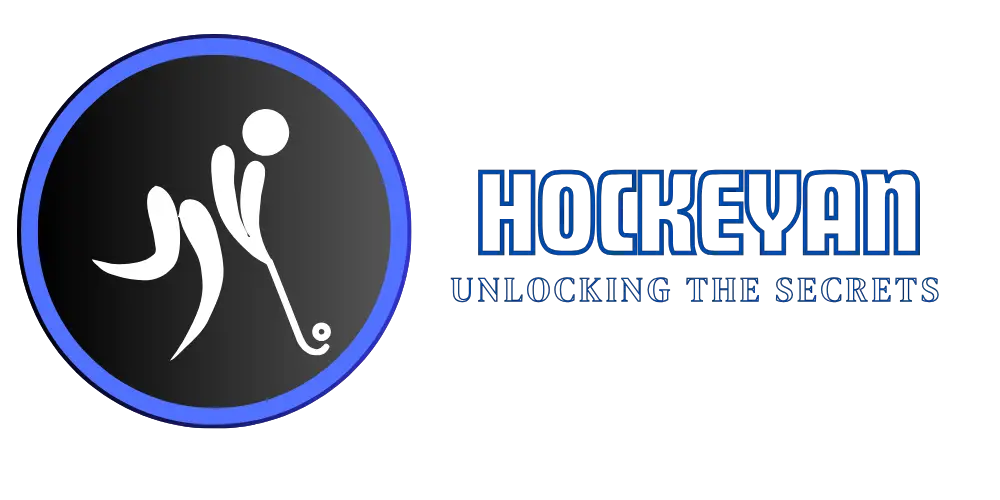Breaking in new ice hockey skates can be a challenge. It often causes discomfort.
New skates can feel stiff and tight at first. Properly breaking them in is crucial for comfort and performance. This process helps mold the skates to your feet, reducing pain and improving fit. Skates that fit well enhance control and agility on the ice.
In this guide, we will explore effective methods to break in your ice hockey skates. These tips will ensure a smoother and more enjoyable skating experience. Let’s get started on making your new skates feel like a second skin.
Choosing The Right Skates
Breaking in ice hockey skates starts with choosing the right pair. The correct skates can make a huge difference in comfort and performance. Below, we discuss key factors to consider when selecting your ice hockey skates.
Fit And Size
Fit and size are critical. Poorly fitting skates can cause blisters and discomfort. Choose skates that fit snugly but not too tight. Your toes should slightly brush the toe cap.
Consider the width of your feet. Skates come in different widths to match narrow, regular, or wide feet. Here’s a simple guide:
| Width | Foot Type |
|---|---|
| Narrow | Thin feet |
| Regular | Standard feet |
| Wide | Broad feet |
Types Of Skates
Ice hockey skates come in various types, each designed for specific needs:
- Recreational Skates: Ideal for beginners. These are affordable and suitable for casual play.
- Performance Skates: Best for intermediate players. They offer better durability and support.
- Elite Skates: Designed for professional players. These provide top-notch performance and custom fit.
Consider your skill level and playing frequency. Beginners should start with recreational skates, while seasoned players might need elite skates.

Credit: skatingboutique.com
Preparing Your Skates
Properly breaking in ice hockey skates ensures comfort and performance on the ice. Wear them for short periods daily. Gradually increase use to mold skates to your feet.
Breaking in ice hockey skates can be challenging. Preparing your skates properly ensures a comfortable fit. This process can prevent blisters and pain. Here are some effective methods to prepare your skates.Heat Molding
Heat molding can help shape your skates to your feet. Most ice hockey skates are heat moldable. This technique uses heat to soften the skate material. It allows the skates to conform to your foot shape. To heat mold, visit a professional skate shop. They have the equipment for precise results. They place the skates in a special oven. The heat softens the material without damaging it. Once heated, you wear the skates to shape them to your feet. Ensure you follow the professional’s instructions. This will give you the best fit possible. Heat molding can make your skates more comfortable. It reduces the break-in period significantly.Lacing Techniques
Proper lacing techniques can also help prepare your skates. Tight laces give better support. Loose laces can cause foot movement and discomfort. Start by loosening the laces completely. Place your foot in the skate and pull the laces snug. Begin at the toe and work upwards. Pull each section tight as you lace up. For added support, use a criss-cross pattern. This helps keep your foot in place. Ensure the laces are tight around your ankle. This provides better stability and prevents injuries. Experiment with different lacing techniques. Find the one that offers the best comfort and support. Properly laced skates improve your performance on the ice. They also help in breaking in the skates faster. “`Initial Skate Sessions
Breaking in new ice hockey skates can be challenging. Initial skate sessions are crucial to making your skates comfortable. This process ensures your skates mold to your feet perfectly.
First Time On Ice
Start with short sessions. Aim for 15-20 minutes on the ice. This prevents blisters and discomfort. Focus on gentle skating movements. Avoid intense drills or games initially. Let your feet adjust to the new skates.
Pay attention to any pressure points. These are areas where the skate feels too tight. Make note of them for adjustments later. Remember, patience is key during this stage.
Building Comfort Gradually
Increase your skate time slowly. Add 10 minutes to each session. This helps your feet adapt without pain. Gradual progression prevents injuries. You will notice your skates becoming more comfortable.
Wear your skates at home. This helps break them in faster. Put on the skates and walk around for 15-30 minutes. It mimics the on-ice experience without the cold.
Consider using skate guards. These protect your blades while walking. They also allow you to practice on different surfaces.
Remember to check your laces. Properly laced skates provide better support. Tighten them evenly to avoid pressure points. Adjust as needed for comfort and stability.

Credit: www.youtube.com
Maintaining Comfort
Breaking in ice hockey skates can be challenging. Maintaining comfort during this process is crucial. Uncomfortable skates can lead to blisters, pain, and poor performance on the ice. Ensuring you take the right steps can help make this period more bearable and enjoyable.
Proper Sock Selection
Choosing the right socks is vital. Thin, moisture-wicking socks are ideal. They keep your feet dry and reduce friction. Cotton socks, on the other hand, absorb moisture and can cause blisters.
Consider investing in specialized hockey socks. These are designed for the sport and provide better comfort. They offer the right balance of thickness and breathability.
| Type of Sock | Benefits |
|---|---|
| Thin, moisture-wicking | Keeps feet dry, reduces friction |
| Specialized hockey socks | Optimal thickness, better comfort |
| Cotton socks | Absorbs moisture, can cause blisters |
Managing Pressure Points
Pressure points can be a common issue with new skates. Identifying and addressing them early can prevent discomfort.
- Use a heat gun or hairdryer to warm up tight areas.
- Wear the skates and use your fingers to press the warm areas.
- This helps the material to mold better to your feet.
If the pressure points persist, consider using gel pads. These pads can be placed inside your skates to cushion the affected areas.
Footbeds can also help. They provide extra support and comfort. Custom footbeds are available if you need a more personalized fit.
Advanced Tips
Breaking in ice hockey skates can be a tricky process. For those looking to take their game to the next level, advanced tips are essential. These tips will help you get the most out of your skates. Let’s dive into the details.
Custom Insoles
Custom insoles offer enhanced comfort and support. They can be tailored to fit your feet perfectly. This ensures that you avoid common foot issues. Here are some benefits of using custom insoles:
- Improved Comfort: Custom insoles reduce foot pain and fatigue.
- Better Fit: They fill gaps and create a snug fit.
- Enhanced Performance: With better foot alignment, you can skate more efficiently.
To get custom insoles, visit a specialty shop. They will take a mold of your feet and create insoles that fit perfectly.
Skate Sharpening
Proper skate sharpening is crucial for performance. Sharp blades provide better control and stability. Here are some key points to consider:
- Frequency: Sharpen your skates every 8-10 hours of ice time.
- Hollow Radius: Choose a hollow radius based on your style of play. A deeper hollow offers more grip, while a shallower hollow provides more glide.
- Professional Sharpening: Get your skates sharpened by a professional. They have the right tools and expertise.
Regular skate sharpening maintains blade integrity. This ensures that you always have the best edge on the ice.

Credit: m.youtube.com
Frequently Asked Questions
How Long Does It Take To Break In Ice Hockey Skates?
Breaking in skates can take 5-10 hours of skating.
Can I Break In Skates Without Skating?
Yes, wear them at home for short periods.
How Do I Make My Skates More Comfortable?
Use heat molding or wear thick socks.
Do I Need To Sharpen My Skates Before Breaking Them In?
Yes, sharpen them for better performance and comfort.
Should I Expect Pain When Breaking In Skates?
Some discomfort is normal, but severe pain is not.
How Can I Speed Up The Break-in Process?
Heat molding and frequent skating help speed up the process.
What Socks Should I Wear To Break In Skates?
Wear thick, moisture-wicking socks for comfort.
Can I Use A Hairdryer To Break In Skates?
Yes, use a hairdryer for mild heat molding.
How Tight Should My Skates Be During Break-in?
Skates should be snug but not painfully tight.
Conclusion
Breaking in ice hockey skates can be simple with proper steps. Start slowly to avoid discomfort. Use heat molding for a better fit. Wear thick socks for extra padding. Practice regularly to speed up the process. Stay patient and consistent.
Well-fitted skates improve performance and comfort. Enjoy the game with your perfectly broken-in skates. Happy skating!




